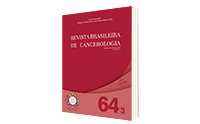The Use of the Toy during the Treatment of Children with Cancer: Perceptions of the Multidisciplinary Team
DOI:
https://doi.org/10.32635/2176-9745.RBC.2018v64n3.28Keywords:
Play and Playthings, Child Care, Neoplasms, Patient Care TeamAbstract
Introduction: Playing is a fundamental activity in childhood and for child development, which must be maintained even in situations of illness and hospitalization. Objective: The objective of this study was to elucidate the experience of the multidisciplinary team with the use of toy during the treatment of children with cancer. Method: This is a qualitative study carried out in an institution that provides specialized assistance to children and adolescents with cancer. The ethical aspects of human research have been respected. Ten members of the multidisciplinary team that used the toy or therapeutic toy with the child in cancer treatment participated in the study. The data collection used as strategy the semi-structured interview. The narratives were analyzed according to the content analysis framework. Results: The shared experiences revealed four representative categories: I. The toy as a strategy for the child to understand about the universe of the disease; II. The toy as a feature that provides security to move forward; III. The toy as a way to give voice to the emotions that can not be silenced; IV. The toy as a bridge approaching professionals, child and family. Conclusion: It is concluded that the to y is a fundamental strategy of creating and narrowing the bond with the child and his family, allowing the child to express their experiences and feelings. Playing establishes a communication that enables the child to understand about his illness and treatment as a singular being.









